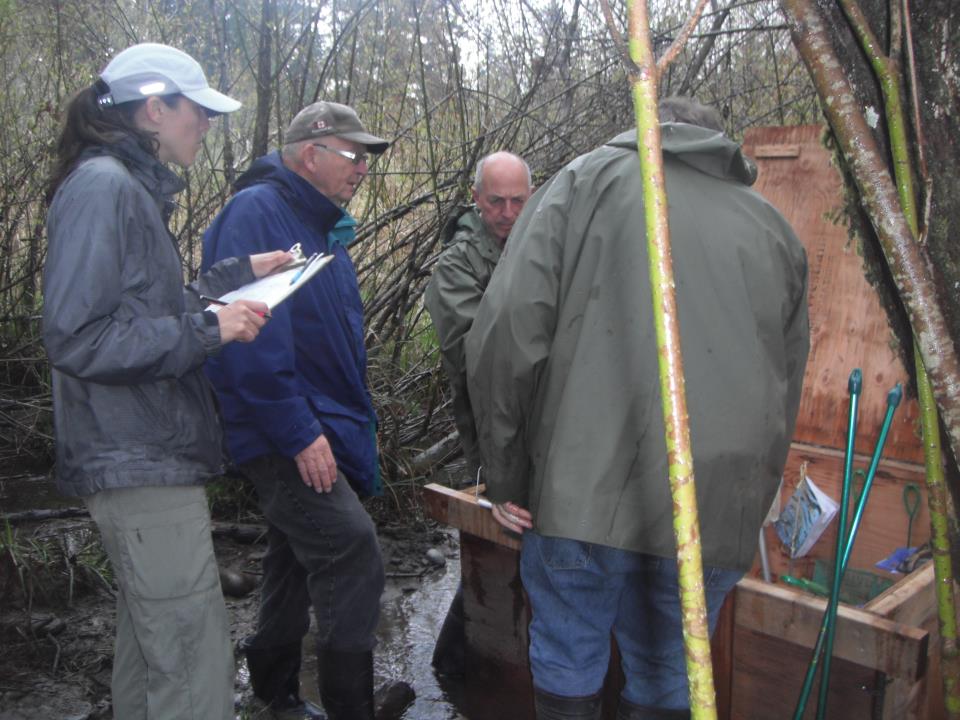Thanks to the Mid Vancouver Island Habitat Enhancement Society (MVIHES), the City of Parksville and grants from The Nature Trust of BC and Pacific Salmon Foundation, there is a new rain garden at the Parksville Fire Hall.
“I am so pleased that Parksville is recognizing the importance of rain gardens in managing stormwater”, said MVIHES Project Coordinator, Faye Smith. Faye went on to say, “Rainwater pouring into storm drains from our streets, parking lots and other hard surfaces has a devastating effect on our streams and shorelines. Not only does the pollution in the water harm fish and other aquatic life, the volume of water that flows through the pipes during a heavy rainfall causes erosion and destroys critical habitat.”
Rain gardens capture and absorb rainwater runoff from hard surfaces. The captured runoff can contain dirt, fertilizer, chemicals, oil and other pollutants which are filtered out in the rain garden. Water safely percolates into the ground where it recharges groundwater aquifers and contributes to stream flow in dry periods. Rain gardens are an attractive way to get clean water back into the ground where it belongs and because they are planted with native plants they are easy to maintain.

Mayor Chris Burger said, “Thanks to a partnership with the Mid Vancouver Island Habitat Enhancement Society we are proud to have a new attractive rain garden alongside the parking lot at the Parksville Fire Hall. I hope this will soon be a growing trend in Parksville.”
For more information about rain gardens you can download the following document prepared by Patrick Walshe, RPBIO, Rainwater Management: Holistic Approaches to Put Water Back in the Ground Where it Belongs
Volunteers with Mid Vancouver Island Habitat Enhancement Society (MVIHES) are once again amazed at the number of coho smolts they are counting in Shelly Creek, a small tributary that enters the Englishman River just upstream of the Orange Bridge in Parksville.
Last year, by May 31, everyone involved in the smolt counting was thrilled to see that they had recorded nearly 3,000 fish in the 6 weeks of monitoring. This year, in less than 2 weeks, they have recorded 3,119 fish.
“Is this a miracle, or not”, said Faye Smith, MVIHES project coordinator, “that so many juvenile coho, as well as Rainbow and Cutthroat trout and other species, fight the odds in these small urban streams and live out their life cycle?”
These fish face a struggle - the water quality is poor, the coho habitat is very limited and the invasive American bull frog is taking its toll on them. Things will not get any better when they reach the estuary where they expect to fatten up and get used to the salt water. The Canada Goose has destroyed almost all of the estuary grasses that provide feeding channels, cover and shade. One can only hope ocean conditions will be good for them.
Smith continues, “So let’s put an end to the idea that ditches are not important enough to protect as fish habitat. Shelly Creek has been ditched, culverted and pretty much twisted like a pretzel from its headwaters in Errington to its confluence with the Englishman and look how it is producing”. This is a good news story.


